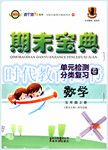
Mr. Klein told the class that a new student, Inez, would join them soon. He 46 that Inez was deaf. She “talked” with others by using sign language. Mr. Klein knew sign language, and he decided to teach 47 students so that they could also “talk” with Inez.
First, they learned to sign the letters. Some letters were hard to remember. Other letters, such as C, were easier because the shape of the hand was the same as the shape of the letter.
The 48 thing they learned was finger spelling. They signed one letter after 49 to spell a word. They started with two-letter words such as “at” and “on”. Then they spelled 50 words.
Finally, Mr. Klein showed that 51 one sign could be used for a whole word. To make the sign for the word “fine”, a person spreads(张开) out the fingers on one hand, touches the thumb(拇指) to the chest(胸部), and moves the hand away from the chest. Signing is not just done with the hands, expressions on the face are also 52 . The students learned to sign a question mark by using expressions 53 the face.
When Inez entered the classroom, she looked 54 . But the students signed, “Good morning, Inez.” She gave the class a big smile and signed back, “What a wonderful 55 !”
( ) 46. A hoped B. said C. guessed D. thought
( ) 47. A. his B. my C. her D. our
( ) 48. A. first B. only C. last D. next
( ) 49. A. other B. another C. the other D. others
( ) 50. A. newer B. easier C. longer D. nicer
( ) 51. A. never B. perhaps C. still D. just
( ) 52. A. important B. different C. difficult D. strange
( ) 53. A. about B. to C. on D. in
( ) 54. A. serious B. surprised C. frightened D. nervous
( ) 55. A. welcome B. congratulation C. progress D. success
 一课一练课时达标系列答案
一课一练课时达标系列答案 期末宝典单元检测分类复习卷系列答案
期末宝典单元检测分类复习卷系列答案科目:初中英语 来源: 题型:阅读理解

| 【小题1】 |
|
| 【小题2】 |
|
| 【小题3】 |
|
| 【小题4】 |
|
| 【小题5】 |
|
| 【小题6】 |
|
| 【小题7】 |
|
| 【小题8】 |
|
| 【小题9】 |
|
| 【小题10】 |
|
查看答案和解析>>
科目:初中英语 来源:2012届福建省厦门外国语学校初三中考模拟英语试卷(带解析) 题型:完型填空
Mr. Klein told the class that a new student, Inez, would join them soon. He ______32______ that Inez was deaf. She “talked” with others by using sign language. Mr. Klein knew sign language, and he decided to teach his students so that they could also “talk” with Inez.
First, they learned to sign the letters. Some letters were hard to ______33_______. Other letters, such as C, were easier because the shape of the hand was the same as the shape of the letter.
The next thing they learned was finger spelling. They signed one letter after another to spell a word. They ____34_______ with two-letter words such as at and on. Then they spelled ___35_______ words.
Finally, Mr. Klein showed that ___36_______ one sign could be used for a whole word. To make the sign for the word fine, a person spreads out the fingers on one hand, ___37___ the thumb to the chest, and moves the hand away from the chest. Signing is not just ___38______with the hands. Expressions on the face are also ___39_____. The students learned to sign a question mark by using expressions on the face.
When Inez first entered the classroom, she looked ____40_______. But the students signed, “Good morning, Inez.” She gave the class a big smile and signed back, “What a wonderful ____41_____!”
| 【小题1】 |
|
| 【小题2】 |
|
| 【小题3】 |
|
| 【小题4】 |
|
| 【小题5】 |
|
| 【小题6】 |
|
| 【小题7】 |
|
| 【小题8】 |
|
| 【小题9】 |
|
| 【小题10】 |
|
查看答案和解析>>
科目:初中英语 来源:2012届安徽省芜湖市初三毕业学业中考模拟四英语试卷(带解析) 题型:完型填空

Mr. Klein told the class that a new student, Inez, would join them soon. He 1 that Inez was deaf. She “talked” with others by using sign language. Mr. Klein knew sign language, and he decided to teach 2 students so that they could also “talk” with Inez.
First, they learned to sign the letters. Some letters were hard to 3 . Other letters, such as C ,were easier because the shape of the hand was the same as the shape of the letter.
The 4 thing they learned was finer spelling. They signed one letter after another to spell a word. They 5 with two-letter words such as at and on . Then they spelled 6 words.
Finally, Mr. Klein showed that 7 one sign could be used for a whole word. To make the sign for the word fine, a person spreads out the fingers on one hand, 8 the thumb(拇指) to the chest(前胸) , and moves the hand away from the chest. Signing is not just done with the hands. Expressions on the face are also 9 . The students learned to sign a question mark by using expressions on the face.
When Inez first entered the classroom. She looked 10 . But the students signed, “Good morning, Inez. ” She gave the class a big smile and signed back, “What a wonderful welcome !”
| 【小题1】 |
|
| 【小题2】 |
|
| 【小题3】 |
|
| 【小题4】 |
|
| 【小题5】 |
|
| 【小题6】 |
|
| 【小题7】 |
|
| 【小题8】 |
|
| 【小题9】 |
|
| 【小题10】 |
|
查看答案和解析>>
科目:初中英语 来源:2011-2012学年福建省厦门外国语学校初三中考模拟英语试卷(解析版) 题型:完型填空
Mr. Klein told the class that a new student, Inez, would join them soon. He ______32______ that Inez was deaf. She “talked” with others by using sign language. Mr. Klein knew sign language, and he decided to teach his students so that they could also “talk” with Inez.
First, they learned to sign the letters. Some letters were hard to ______33_______. Other letters, such as C, were easier because the shape of the hand was the same as the shape of the letter.
The next thing they learned was finger spelling. They signed one letter after another to spell a word. They ____34_______ with two-letter words such as at and on. Then they spelled ___35_______ words.
Finally, Mr. Klein showed that ___36_______ one sign could be used for a whole word. To make the sign for the word fine, a person spreads out the fingers on one hand, ___37___ the thumb to the chest, and moves the hand away from the chest. Signing is not just ___38______with the hands. Expressions on the face are also ___39_____. The students learned to sign a question mark by using expressions on the face.
When Inez first entered the classroom, she looked ____40_______. But the students signed, “Good morning, Inez.” She gave the class a big smile and signed back, “What a wonderful ____41_____!”
|
1. |
|
|
2. |
|
|
3. |
|
|
4. |
|
|
5. |
|
|
6. |
|
|
7. |
|
|
8. |
|
|
9. |
|
|
10. |
|
查看答案和解析>>
科目:初中英语 来源:2011-2012学年安徽省芜湖市初三毕业学业中考模拟四英语试卷(解析版) 题型:完型填空
1

Mr. Klein told the class that a new student, Inez, would join them soon. He 1 that Inez was deaf. She “talked” with others by using sign language. Mr. Klein knew sign language, and he decided to teach 2 students so that they could also “talk” with Inez.
First, they learned to sign the letters. Some letters were hard to 3 . Other letters, such as C ,were easier because the shape of the hand was the same as the shape of the letter.
The 4 thing they learned was finer spelling. They signed one letter after another to spell a word. They 5 with two-letter words such as at and on . Then they spelled 6 words.
Finally, Mr. Klein showed that 7 one sign could be used for a whole word. To make the sign for the word fine, a person spreads out the fingers on one hand, 8 the thumb(拇指) to the chest(前胸) , and moves the hand away from the chest. Signing is not just done with the hands. Expressions on the face are also 9 . The students learned to sign a question mark by using expressions on the face.
When Inez first entered the classroom. She looked 10 . But the students signed, “Good morning, Inez. ” She gave the class a big smile and signed back, “What a wonderful welcome !”
1.A. hoped B. said C. guessed D. thought
2.A. his B. my C. her D. our
3.A. spell B. check C. remember D. write
4.A. first B. only C. last D. next
5.A. met B. started C. agreed D. helped
6.A. newer B. easier C. longer D. nice
7.A. never B. perhaps C. still D. just
8.A. joins B. fixed C. touches D. ties
9.A. important B. different C. difficult D. strange
10.A. serious B. surprised C. frightened D. nervous
查看答案和解析>>
湖北省互联网违法和不良信息举报平台 | 网上有害信息举报专区 | 电信诈骗举报专区 | 涉历史虚无主义有害信息举报专区 | 涉企侵权举报专区
违法和不良信息举报电话:027-86699610 举报邮箱:58377363@163.com